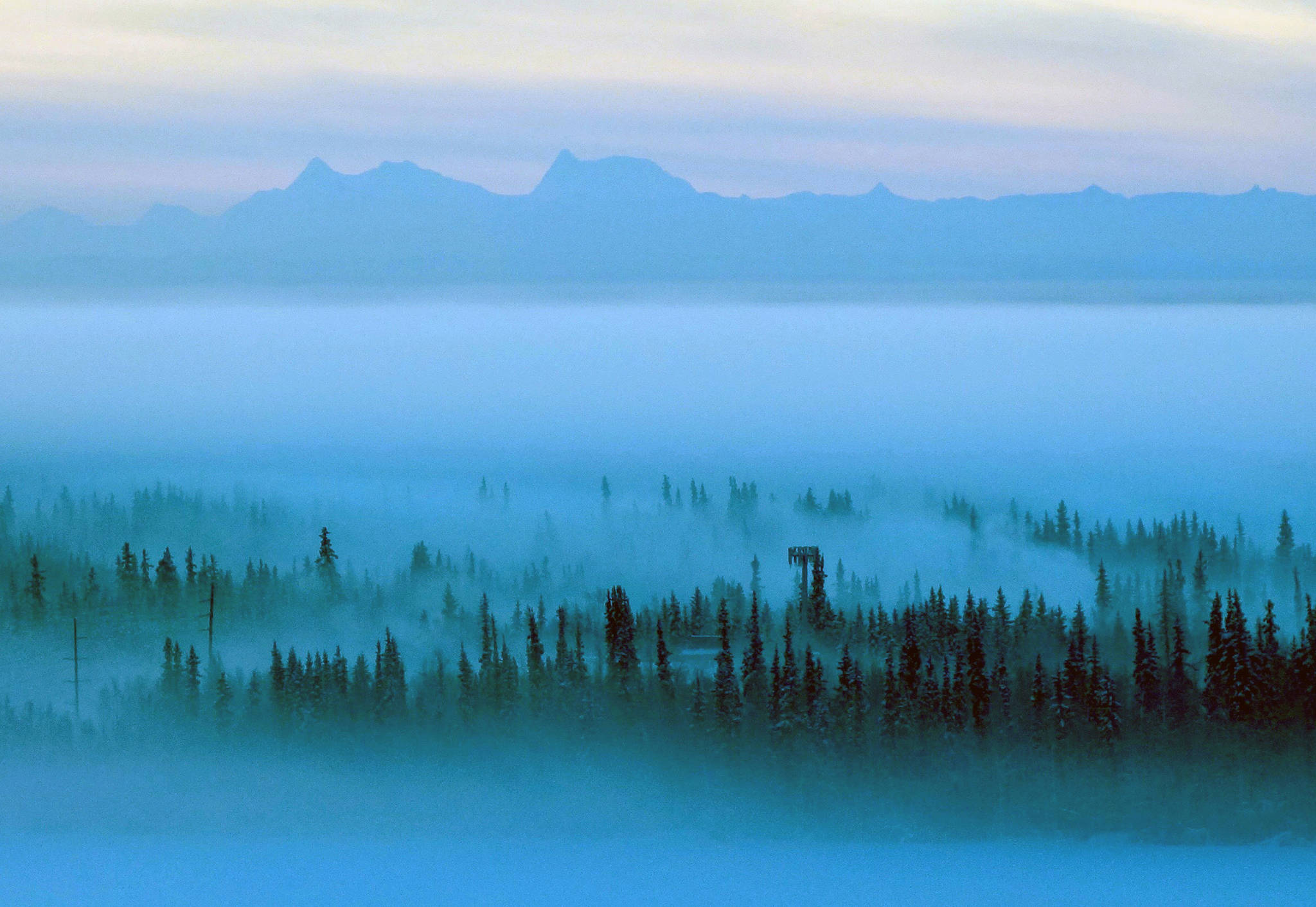A father wakes, rolls out of bed and drops his toes to cold carpet. He grabs a flashlight and shines it outside the window. The thermometer reads 40 below zero, the only point at which the Fahrenheit and Celsius scales agree. The red liquid within his thermometer is alcohol; mercury freezes at 38 below.
His little boy wakes, dresses and hands his father birch logs to add to the wood stove. The logs are heavy, cut last fall and not properly dried. The green wood contains almost 50% moisture, compared to about 30% in cured wood. The logs hiss amid other burning logs. They give off no heat until the moisture is driven off.
Outside on the packed snow, a car is plugged in. The father remembered the night before to activate the heating element that warms his antifreeze, which in turn keeps his motor oil just viscous enough to allow the pistons to move. A heat blanket, another northern adaptation, has kept the battery at about 20 degrees Fahrenheit; just warm enough to permit 50% of the cranking strength available in summer.
After breakfast, the mother dresses her boy so he can wait outside for the school bus. She pulls a big pile hat over his head, knowing that’s where the human body loses the most heat, followed by his neck, the sides of his torso under the arms, and his groin.
Mother and son walk outside, crunching the snow on the driveway as they break the bonds between snow crystals. The dry snow is cold enough to prevent skis from gliding. The air is so cold it robs the interface between ski and snow of heat produced by friction that creates melt water on which to glide in warm temperatures.
On the road, car headlights cut through the ice fog that hangs over the road like cotton candy. Exhaust, about 250 degrees in the tailpipe, cools to minus 40 in less than 10 seconds after it comes out of the vehicle. Water-cooled that fast turns into tiny particles that make up ice fog. Cars and trucks aren’t the only things that make ice fog. Any source of water vapor will do, including people and dogs.
Waiting for the bus, mother and son turn to the sound of a nearby train. Though the train is more than five miles away, a temperature inversion makes it sounds as if it’s coming down the street. The inversion, created when warm air rests on top of colder air, acts as a tunnel in which sound waves bounce for great distances.
The boy sees a raven flying above the ice fog and points to it. Ravens often roost close to town during a cold snap. As the black bird flies through the air, its hyper metabolism keeps its body temperature at about 107 degrees. Through various adaptations, most animals are bothered very little by the cold, though chickadees adapted to life at bird feeders will probably die if people stop feeding them now.
School is rarely closed by cold weather in Alaska (the Fairbanks North Star Borough has no official temperature cut-off), so the bus arrives on time. The mother walks back into the house, her toes tingling as her extremities go through a normal cycle of warming and cooling. Her toe temperature rises to 68 degrees after falling to 50 while waiting for the bus.
The father starts a sluggish car engine. During the cold start, his engine spews a large amount of carbon monoxide, nitrogen oxides and a whole slew of hydrocarbons. After five to 10 minutes, heat from the engine warms the gasoline, which changes more readily to vapor, allowing more gas to ignite and reducing the pollutants out the tailpipe.
As he pulls out of the driveway and into the fog floating above the street, his car bounces due to a tire that has retained a flat spot. He bumps down the road slowly until the tire warms enough for the rubber to become more flexible. Life rolls on.
• Since the late 1970s, the University of Alaska Fairbanks’ Geophysical Institute has provided this column free in cooperation with the UAF research community. Ned Rozell is a science writer for the Geophysical Institute. A version of this column appeared in 2007.

